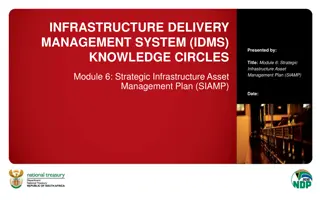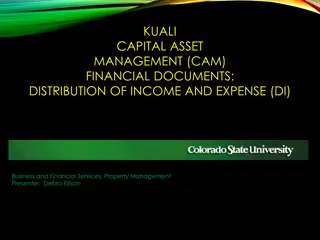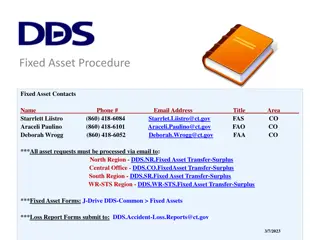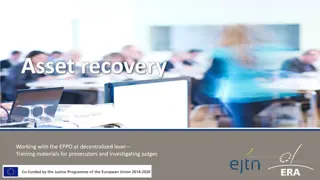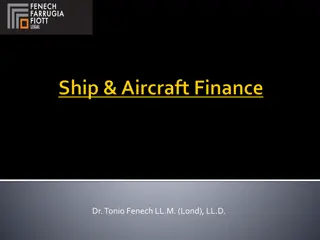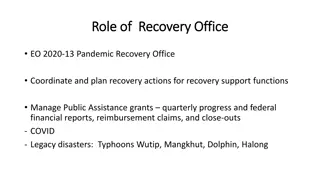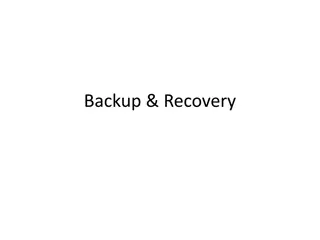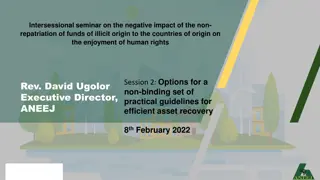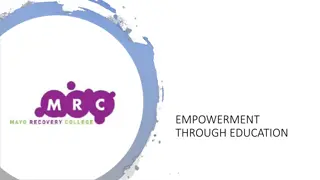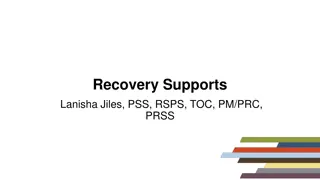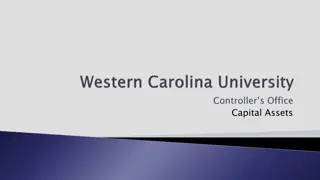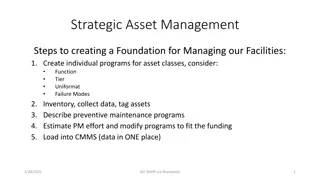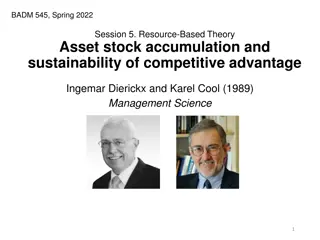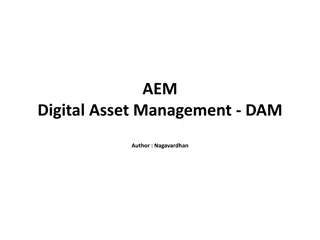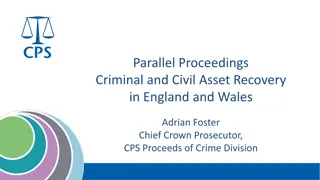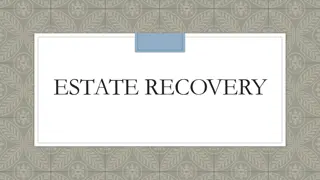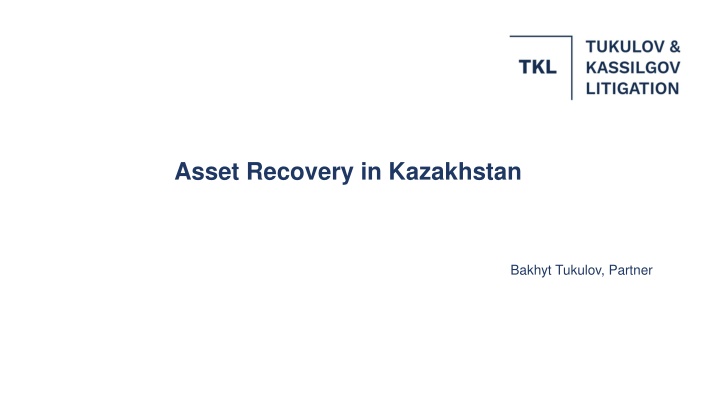
Asset Recovery Challenges and Advantages in Kazakhstan
Explore the challenges and potential advantages of asset recovery in Kazakhstan, including inefficient institutions, lack of clarity in laws, and limited options for evidence production. Discover how the court system, international arbitration, and electronic systems play a role in asset recovery efforts.
Download Presentation

Please find below an Image/Link to download the presentation.
The content on the website is provided AS IS for your information and personal use only. It may not be sold, licensed, or shared on other websites without obtaining consent from the author. If you encounter any issues during the download, it is possible that the publisher has removed the file from their server.
You are allowed to download the files provided on this website for personal or commercial use, subject to the condition that they are used lawfully. All files are the property of their respective owners.
The content on the website is provided AS IS for your information and personal use only. It may not be sold, licensed, or shared on other websites without obtaining consent from the author.
E N D
Presentation Transcript
Asset Recovery in Kazakhstan Bakhyt Tukulov, Partner
Main Challenges: 1. Inefficient or sometimes corrupt institutions ( active role of the court); 2. Lack of clarity in the law and judicial practice; 3. High state duty payable to commence civil proceedings; 4. Relatively short time frames of civil proceedings (advantages vs disadvantages); 5. Limited options for production of evidence; 6. Not easy to commence insolvency proceedings;
Potential Advantages: 1. Court / International Arbitration Court at the Astana International Financial Center (AIFC); 2. The system of enforcing judicial acts (private enforcement); 3. Relative ease of obtaining injunctive relief (IR) in civil proceedings (IR before commencing a civil claim is not available); 4. Foreign arbitral awards/judgments are usually recognised and enforced (very quick and relatively simple + immediate enforcement); 5. Wide use of electronic systems (e-judicial cabinet, various e-services, online hearings);
Challenges (1) overview: Inefficient, sometimes corrupt institutions (criminal cases are difficult to start, low predictability of judicial acts, insufficient qualification of judges, etc.); Cases against the state or quasi-state entities are very hard to win; Latest amendments to the Civil Procedure Code envisage active role of the court (in collecting evidence and on many procedural issues); Lack of clarity in the law and judicial practice (contradicting judgments are not uncommon); Courts are not flexible (e.g. limited options to obtain evidence (specific documents), heavy reliance on document evidence, witness statements are rarely accepted, system of state expertise is not reliable);
Challenges (2) structure of courts: Chairman of the Supreme Court Very exceptional cases Motion to reconsider (2) Review on merits if motion is granted Cassation Court (Supreme Court) (1) Motion to reconsider Appellate Court Courts of General Jurisdiction Special District Economic Court
Challenges (3) timing: Chairman of the Supreme Court <1% granted Criteria are not clear No specific time frame No deadline, number of submissions not limited (2) 1.5 months to consider Cassation (Supreme Court) <10% granted Criteria are not clear (1) Up to 3 months (motion) Binding judgment 6 months to appeal (+monetary limits apply) 2 months Appellate Court 1 month to appeal 3 months (with the option to extend by an additional month) (very strictly observed) District Court
Challenges (4) other issues: Flat 3% state duty (no upper limit) applies on all monetary claims (including foreclosure upon pledges); Commencing insolvency proceedings requires a binding judgment (unless a creditor joins an ongoing insolvency proceeding) (bankruptcy is not easy to achieve); Holding directors/shareholders liable is very difficult; Rehabilitation Procedure (latest amendments, fixing claims in KZT up to 5 years);
Potential Advantages (1) AIFC: 1. AIFC Court operates based on its Court Rules (independence from the judicial and political system of Kazakhstan + political support; qualification of judges) (only commercial and corporate disputes); 2. Extended statute of limitation (6 years vs. 3 under Kazakh law); 3. Limited discovery (one may request production of a category of documents), broader possibility to use witness statements, cross- examination, expert evidence, etc.; 4. Jurisdiction of the Court: contract (parties may opt-in), choice of AIFC law, between AIFC entities, and transactions executed in AIFC;
Potential Advantages (2) AIFC: 1. Awards issued by the AIFC Arbitration are recognised and enforced by AIFC Court (bypassing Kazakh courts); 2. Higher likelihood of successful enforcement (Enforcement Judge); 3. Cheaper than Kazakh Courts (in respect to larger claims); 4. Flexibility of the AIFC Arbitration; 5. Exempt from local law;
Potential Advantages (3) enforcement system: All judgments (except judgments against the state and quasi-state entities) are enforced exclusively by private enforcement officers (PEO); PEOs are licensed, have relatively same set of powers compared to state EOs; PEOs get paid a fee according to a regressive scale (25-3% of the collected amount, but not more than approx. USD 70k); Competitive environment; Enforcement measures: (apart from freezing of assets/restriction on certain actions) a travel ban on the debtor s director, suspending licenses and permits of the debtor;
Potential Advantages (4) courts: 1. Foreign arbitral awards/judgments are usually recognised and enforced (very quick and relatively simple procedure) (more than 90% of motions are granted); 2. Injunctive relief is frequently granted in monetary claims (freezing of debtor s assets) and not very easy to cancel (relatively quick enforcement of IR with the help of PEOs, IR is available in respect to foreign/domestic arbitrations); 3. Wide use of electronic systems (e-judicial cabinet, various e-services, online hearings); 4. Plans to introduce Electronic Jurisdiction (re-distribution of cases to courts with smaller workload); 5. Timing;
Potential Advantages (5) Bankruptcy Law: 1. Pledges do not form part of the bankruptcy mass (not available in a rehabilitation proceeding); 2. Bankruptcy (BM) /rehabilitation manager (RM) is hired by creditors; 3. BM/RM does not pay state duty to commence claims within the procedure;
Thank you! Bakhyt Tukulov: bt@tkl.kz www.tkl.kz +7 701 929 04 93


